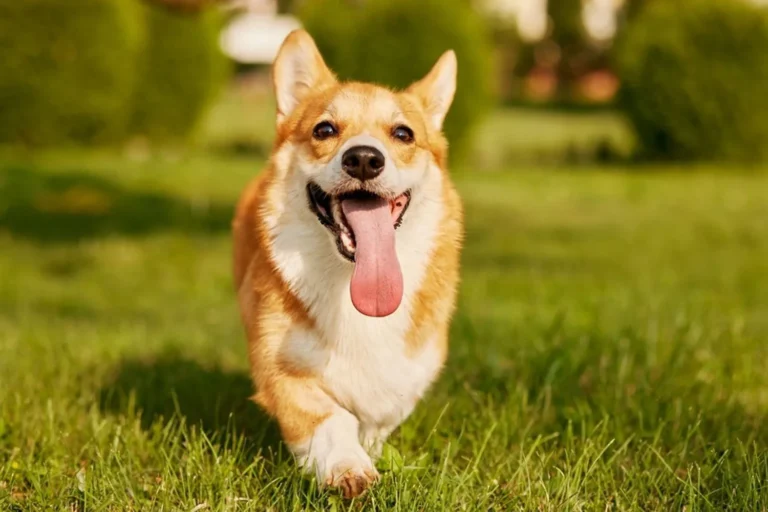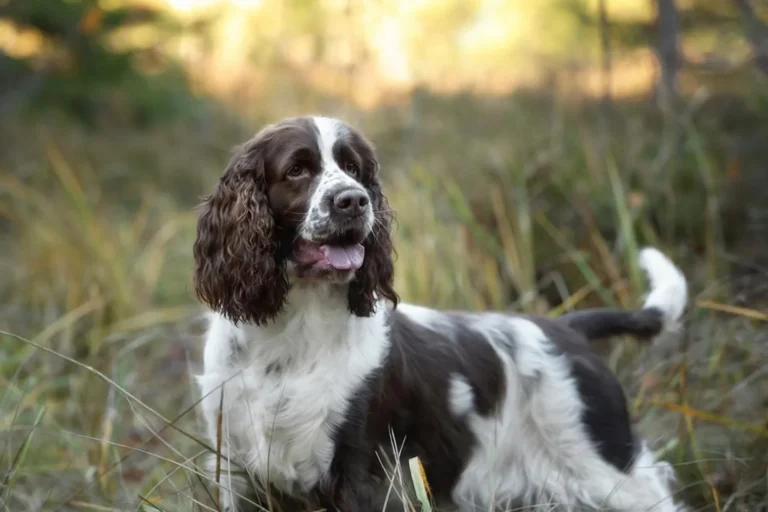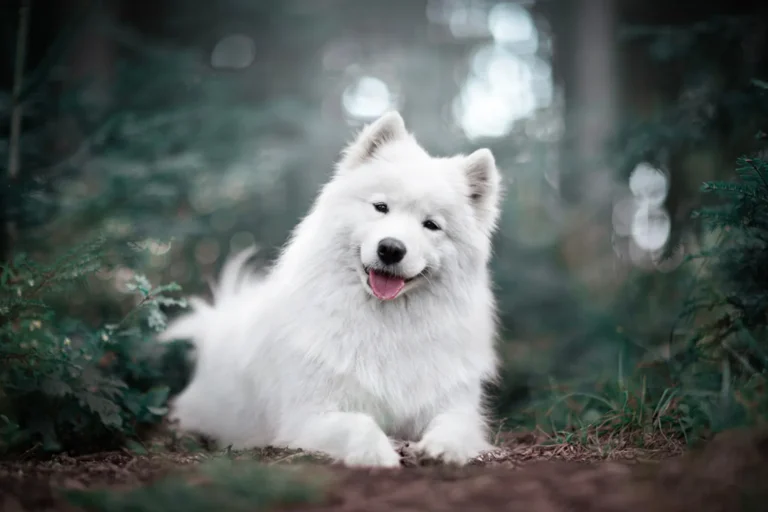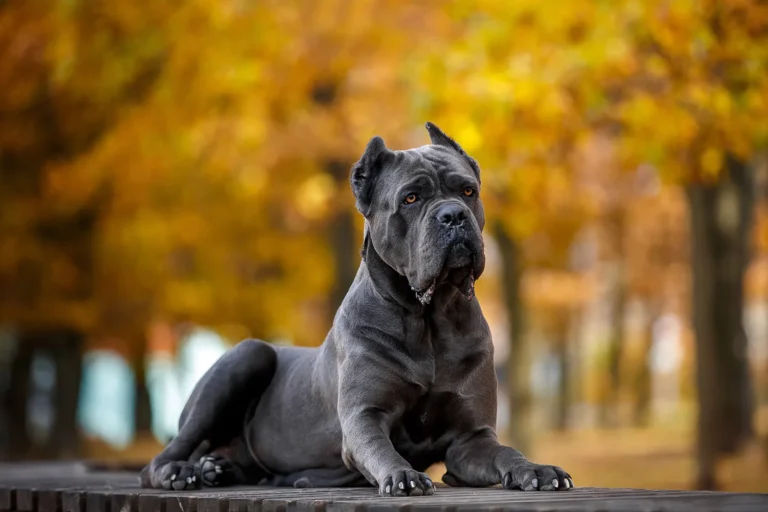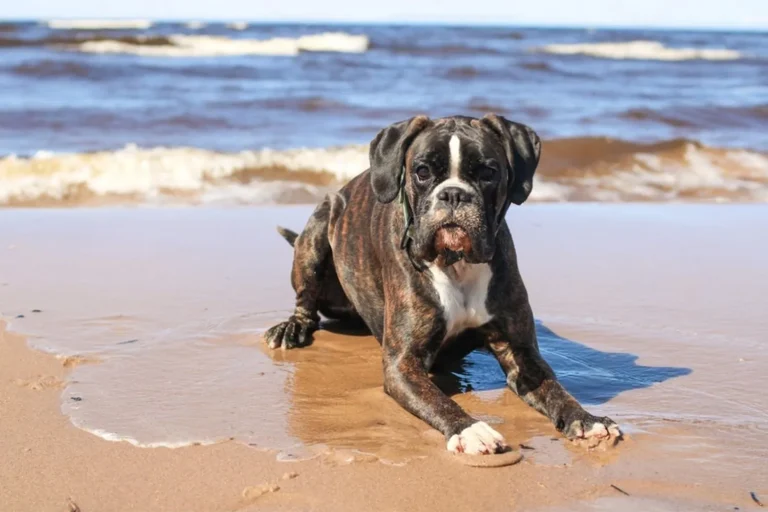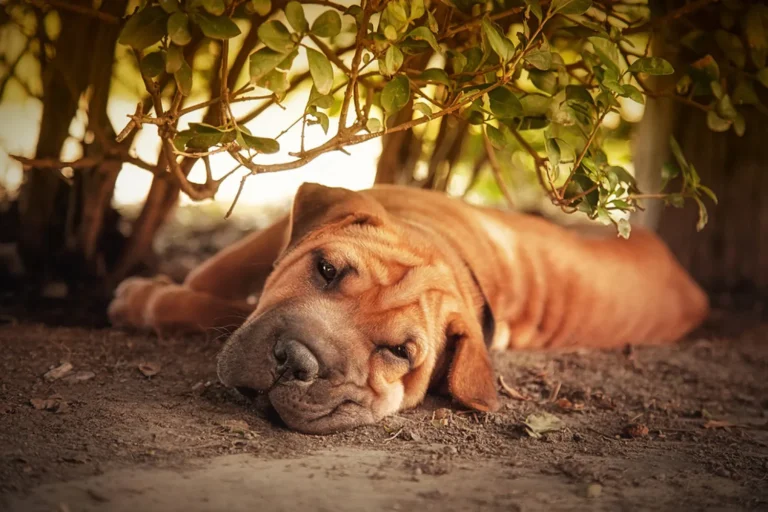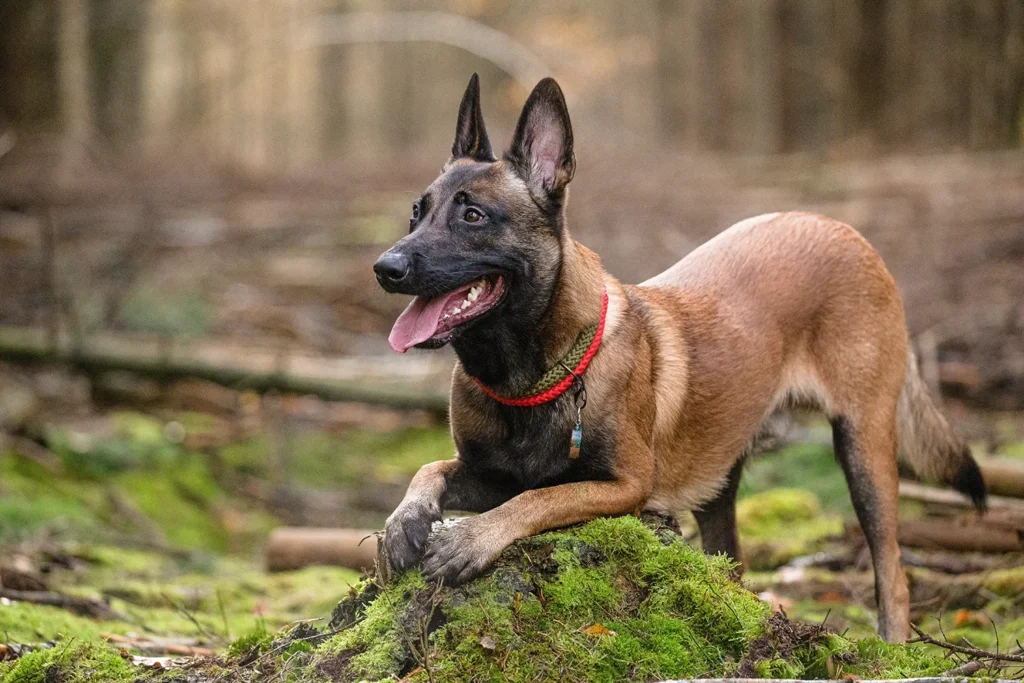
People often do a double take at the park, thinking a Belgian Malinois is a German Shepherd’s slimmer cousin. I remember walking with my friend’s Malinois, Koda, and hearing, “Nice Shepherd!” at least three times in one loop. They do share that noble, alert look, but the Malinois tends to be a bit leaner and springier, with a fawn coat and dark mask that make them look like they’re always ready for a mission. That athletic build traces back to their roots as herding dogs, and you can still see it in the way they move always scanning, always on task. Koda once “herded” the entire group of kids at a family picnic into a neat circle just by pacing and giving a very serious stare. No one complained; snacks were distributed with impressive efficiency.
These days, you’ll spot Belgian Malinois working with police and military units, and it makes perfect sense sharp minds, big hearts, and the kind of focus that doesn’t flicker. At home, that same dedication turns into loyal, protective companionship, which is wonderful if you’re ready to channel it. My advice: give them a job every single day. It can be structured training, agility, scent games in the backyard, or even carrying a little backpack on hikes. Start obedience and socialization early, keep sessions short and upbeat, and teach a good “settle” so their brains learn off switches as well as on switches. A bored Malinois will invent work for themselves usually involving your shoes so plan on plenty of exercise and mental puzzles. Do that, and you’ll have a steadfast partner who adores their people and rises to every challenge right by your side.
What Is the History and Origin of the Belgian Malinois?
When you look at a Belgian Malinois, you’re seeing a slice of working dog history that goes back to the late 1800s in Belgium. Back then, shepherds and farmers needed hardy, clever dogs to manage flocks and guard homesteads, and a whole family of Belgian sheepdogs took shape. Four types emerged from the same roots: the short coated Malinois, the long coated Tervuren and Groenendael, and the rough coated Laekenois. In 1891, the Belgian Shepherd Dog Club was formed to make sense of this talented bunch, and by 1892, Professor Adolphe Reul helped outline the first standard, grouping them by coat type long, rough, or short. By 1901, the Belgian Shepherd was officially recognized as a breed in Belgium.
The Malinois story has a very specific branch on that family tree. In 1885, a breeder named Adrien Janssens had a pair of dogs Vos I and Lise de Laeken who became foundational ancestors for the modern Malinois. Not long after, a club in the city of Malines (Mechelen) started promoting the fawn, short haired type in 1898. That’s where the name “Malinois” comes from these were the sleek, tan, quick responding dogs that became the pride of Malines.
Because they were so focused and reliable, Malinois moved naturally from the fields into more formal service. They worked as guard dogs and were among the very first dogs used by Belgian police. By World War I, they were serving in the military as well, doing the kind of steady, nerve holding jobs that require brains and bravery in equal measure. I once saw a faded photo in a small Belgian museum of a shepherd dog in a simple harness beside a soldier; even without a caption, you know exactly what that partnership meant.
That working reputation only grew. Today, Malinois are fixtures in military units, police K9 teams, and search and rescue groups around the world. A lot of them have been imported to the United States, especially as agencies look for dogs that can switch from tracking in the woods to calmly walking through an airport. I remember chatting with a handler at a community demo who laughed that his Malinois “reads the wind like a book.” Five minutes later, the dog found a hidden object that everyone else missed.
If you’re curious about living with one, their history is your best guide. This is a breed bred for a job. They’re quick, keen, and happiest when they have a purpose whether that’s herding, scent games, agility, or advanced obedience. A trainer I met in California told me her imported Malinois sleeps hard after a day of tracking drills and puzzle feeders, but if you skip the mental work, he’s bouncing off the walls by dinner. My own rule of thumb: plan the dog’s “workday” before you plan your own. A brisk morning session, a midday brain game, and an evening run can turn that famous Malinois intensity into the most satisfying companion you’ll ever know.
From farm fields to front lines, the Malinois has always been the dog that shows up ready to work. That legacy is still right there in their bright eyes and quick feet and it’s a big part of why so many people, myself included, admire them so much.
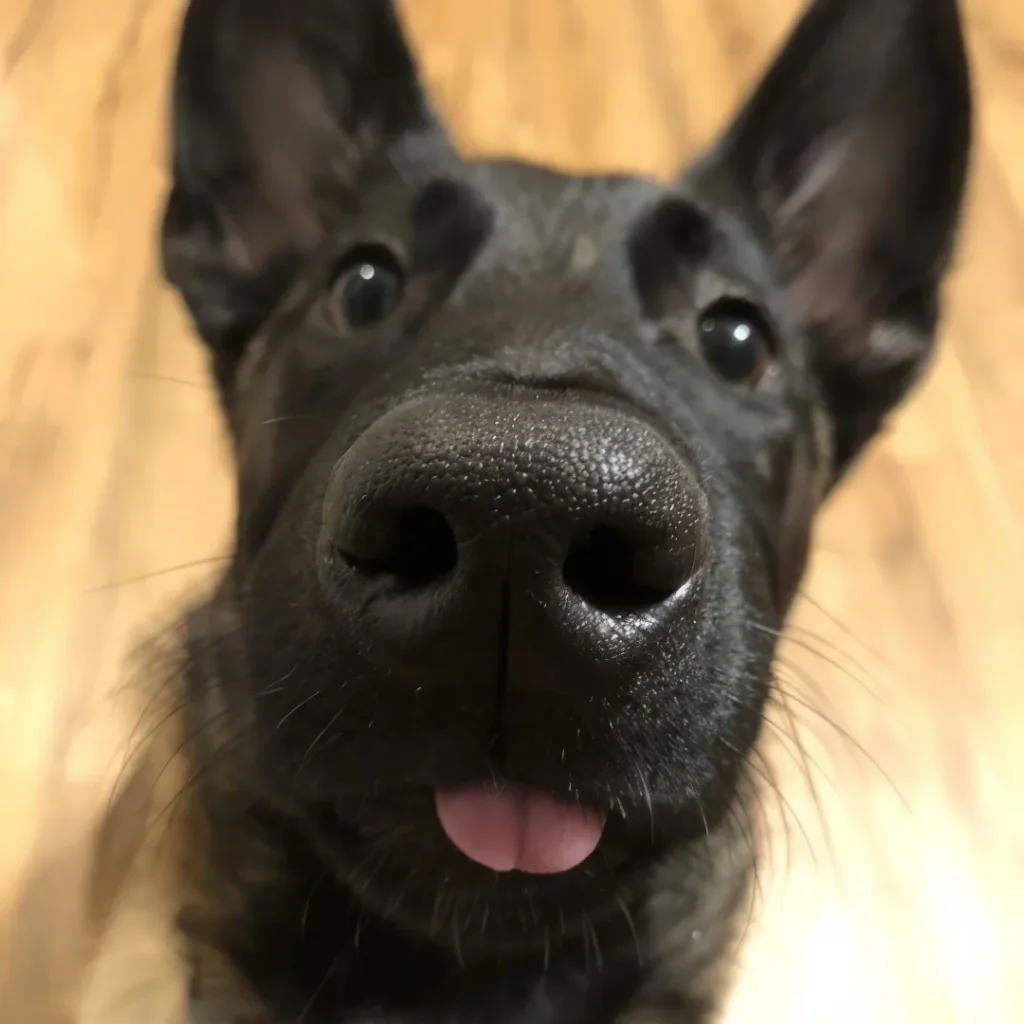
What Is a Belgian Malinois?
The Belgian Malinois is a medium sized, athletic dog that’s also known as a Belgian Shepherd. With their sleek, short coat, they’re often mistaken for German Shepherds or even lumped in with other Belgian Shepherd types because of the similar build and alert expression. Most Malinois wear that classic fawn colored coat with a black mask like they’ve stepped out of a spy movie paired with a lean, muscular frame built for speed and agility.
These dogs are bright, energetic, and happiest when they have a job to do. I remember meeting a Malinois at the park who zipped through an agility course like it was a casual stroll. They thrive on training, games, and challenges puzzle toys, scent work, long hikes, you name it. If you’re thinking of bringing one home, plan on daily exercise and consistent, positive training. They’re not couch potatoes, and boredom can turn them into creative mischief makers.
That said, they’re loyal and deeply connected to their people. A friend of mine thought a long fetch session would tire her Malinois out five minutes later, he brought her the leash as if to say, “Nice warm up.” Give them structure, purpose, and plenty of affection, and you’ll have a devoted companion who’s as impressive as they are loving.
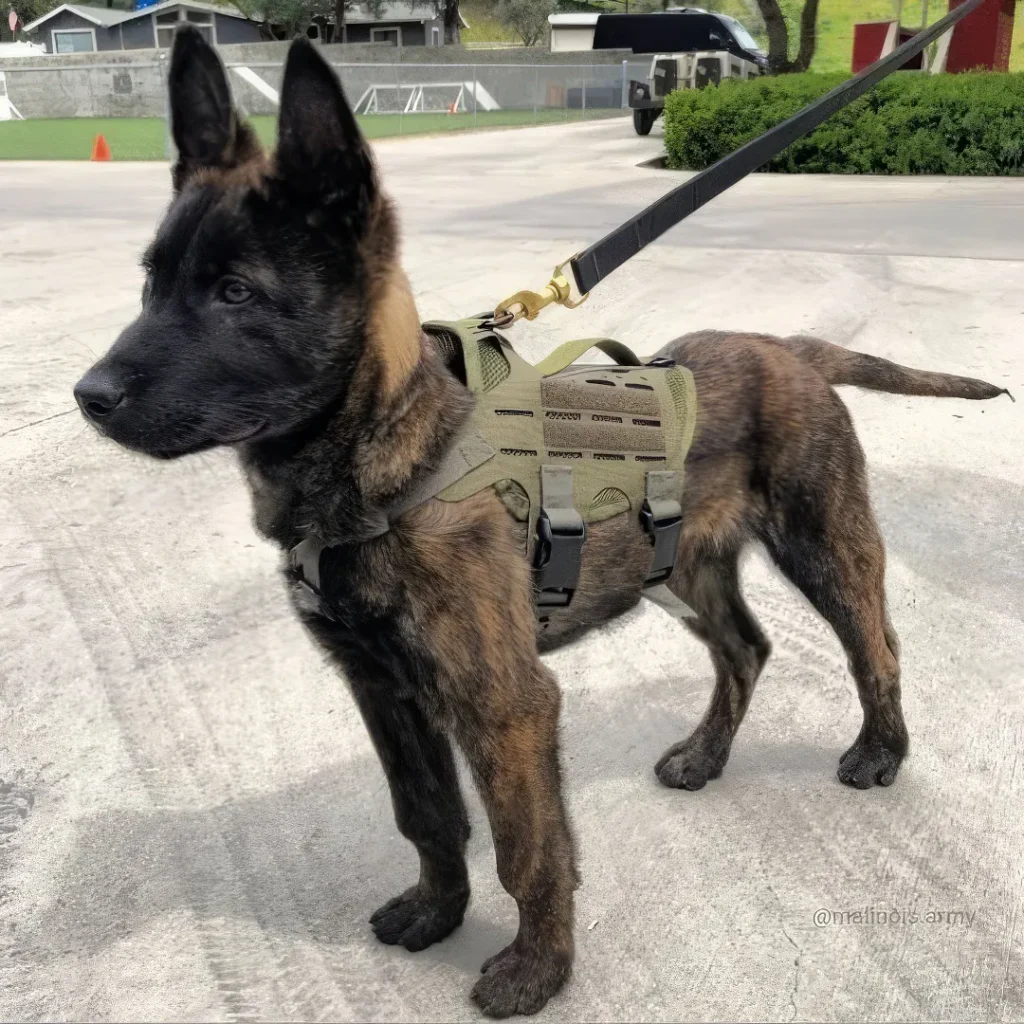
Who Is a Belgian Malinois Best For?
If you love an active lifestyle and want a dog who can keep up (and then some), the Belgian Malinois might be your perfect shadow. These are high drive, high brain dogs that thrive when they’ve got a job to do. I once met a Malinois at a local park who would laser focus on a Frisbee for 30 minutes and then happily switch to practicing obedience drills tail wagging the whole time. That’s their sweet spot: movement plus mental work.
Despite their working dog reputation, they can do just fine in an apartment as long as their exercise and training needs are met. Think several purposeful outings every day: a brisk morning run or bike ride trot, a lunchtime sniffari to tire the brain, and an evening session with training, fetch, or a flirt pole. On rainy days, I’ve saved my sanity with puzzle feeders, short heelwork laps down the hallway, and scent games with hidden treats. A yard is nice, but it’s not a substitute for this kind of engagement.
The American Kennel Club is spot on in saying they’re not typically the best pick for first time owners. Malinois require consistent structure, early socialization, and ongoing training from the get go. They’re brilliant, sensitive, and can outthink you if you’re not ready. If you’re an experienced dog person who enjoys learning, setting clear boundaries, and getting outdoors daily, you’ll likely adore this breed. If you’re newer and determined, line up a reputable trainer, a solid routine, and a plan for daily activity before bringing one home. A breeder I spoke with in California told me their happiest Malinois families are the ones who treat training like a fun hobby, not a chore. Do that, and you’ll have a devoted partner who lives to be by your side on the trail, in a class, or curled up at your feet after a job well done.
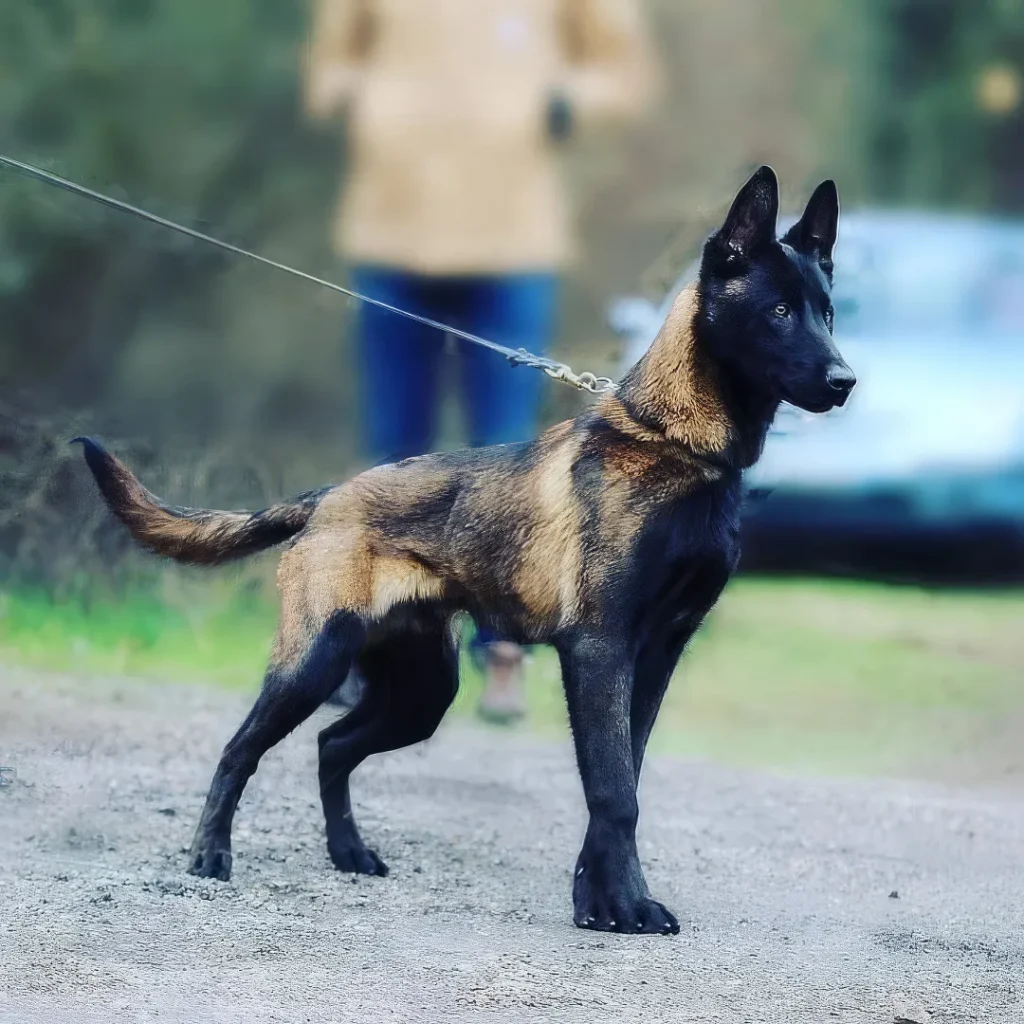
Belgian Malinois Grooming and Shedding
That short, straight coat really does make a Malinois pretty easy to keep tidy. The hard topcoat and dense undercoat act like a weatherproof jacket, so you’re not stuck doing weekly baths. I’ve hiked muddy trails with a friend’s Mal, and once the dirt dried, most of it simply brushed right off. A bath every month or two, or after a particularly messy adventure, is usually plenty. When you do bathe, use a gentle dog shampoo and rinse well to keep those natural oils happy.
Brushing is where the magic happens. A firm bristle brush once or twice a week will sweep out dead hair and bring back that healthy shine, and it’s especially helpful because Mals shed all year. In spring and fall, expect a heavier “coat blow” where you’ll see tufts coming out in handfuls an undercoat rake or a slicker brush can be a lifesaver then. I keep sessions short and upbeat, a few minutes after a walk with a handful of treats, and it turns grooming into a little bonding ritual.
Don’t forget the small stuff: brush their teeth once or twice a week with dog safe toothpaste (a finger brush and some chicken flavor won me a very wiggly fan), and trim nails regularly if you hear clicking on the floor, it’s time. Check dewclaws and take it slow if you’re new to clipping; a grinder can help. I also peek in those upright ears weekly and wipe away dust. Keep it consistent, and your Malinois will look and feel fantastic.
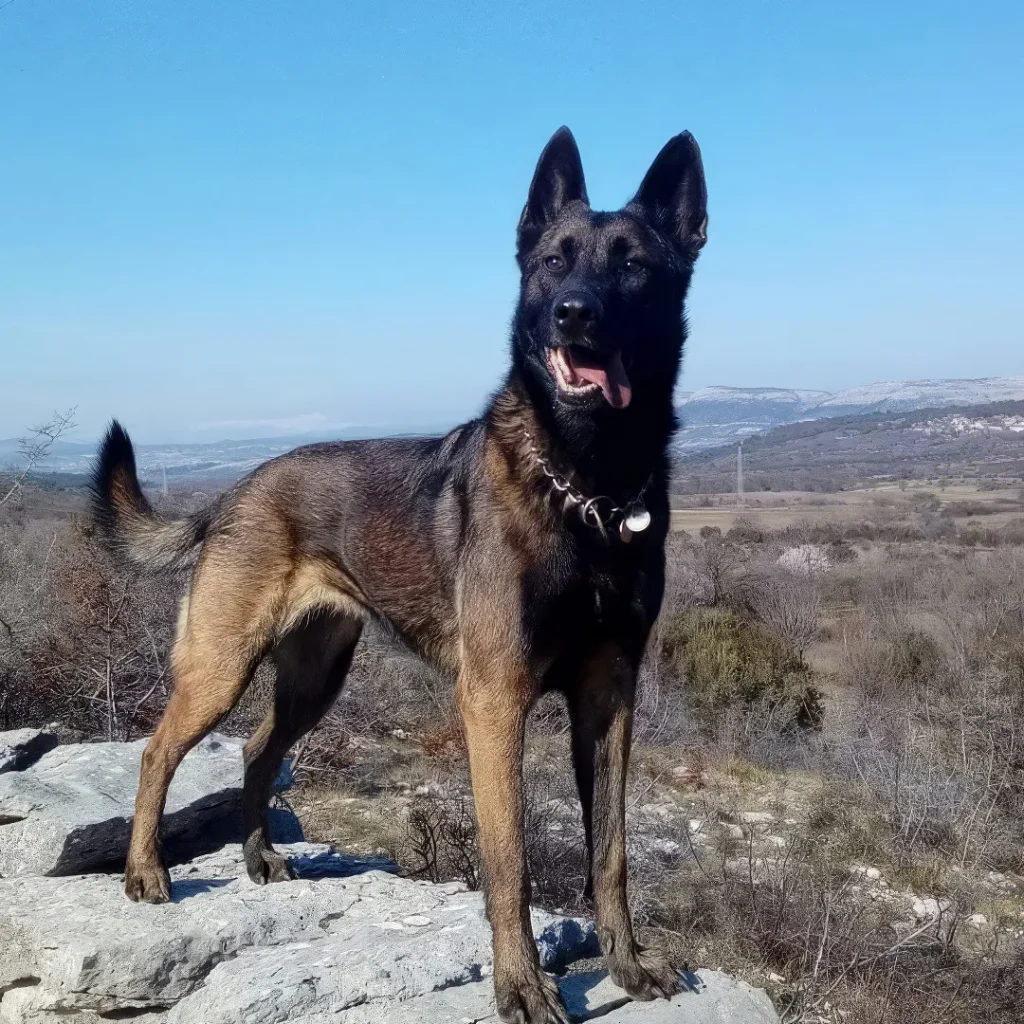
Do Belgian Malinois Bark a Lot?
If your dream dog is the strong, silent type, a Belgian Malinois might surprise you. They’re smart, alert, and energetic traits that often come with a pretty active voice. Most of the barking has a purpose: “There’s someone at the door,” “I need to go out,” “Hey, you forgot dinner,” or simply “I’m bored, give me a job!” With their herding background, they’re wired to notice every little movement and report back, which can make them chattier than many breeds.
That said, you can guide their vocal nature. I’ve found the first step is meeting needs before the noise starts good exercise, mental work, and a predictable routine. My friend’s Malinois, Kira, used to patrol the windows and narrate the squirrel channel all afternoon. We added a morning flirt pole session, a food puzzle at lunch, and taught a “quiet” cue by rewarding a few seconds of silence after a single bark. Within a week, the commentary dropped to a manageable murmur.
A few simple strategies help:
– Teach “speak” and “quiet” so you can turn the volume on and off.
– Tire the brain as much as the body short training bursts, nosework, and problem solving games do wonders.
– Manage triggers: close blinds facing busy streets, play soft music, and practice calm greetings at the door.
– Avoid yelling back; it sounds like you’re joining the chorus. Instead, redirect and reward calm.
You won’t eliminate barking entirely it’s communication but with structure and outlets, a Malinois can learn when to pipe up and when to relax. If absolute quiet is nonnegotiable, another breed might suit you better; if you love a dog with opinions and drive, this one’s a joy.
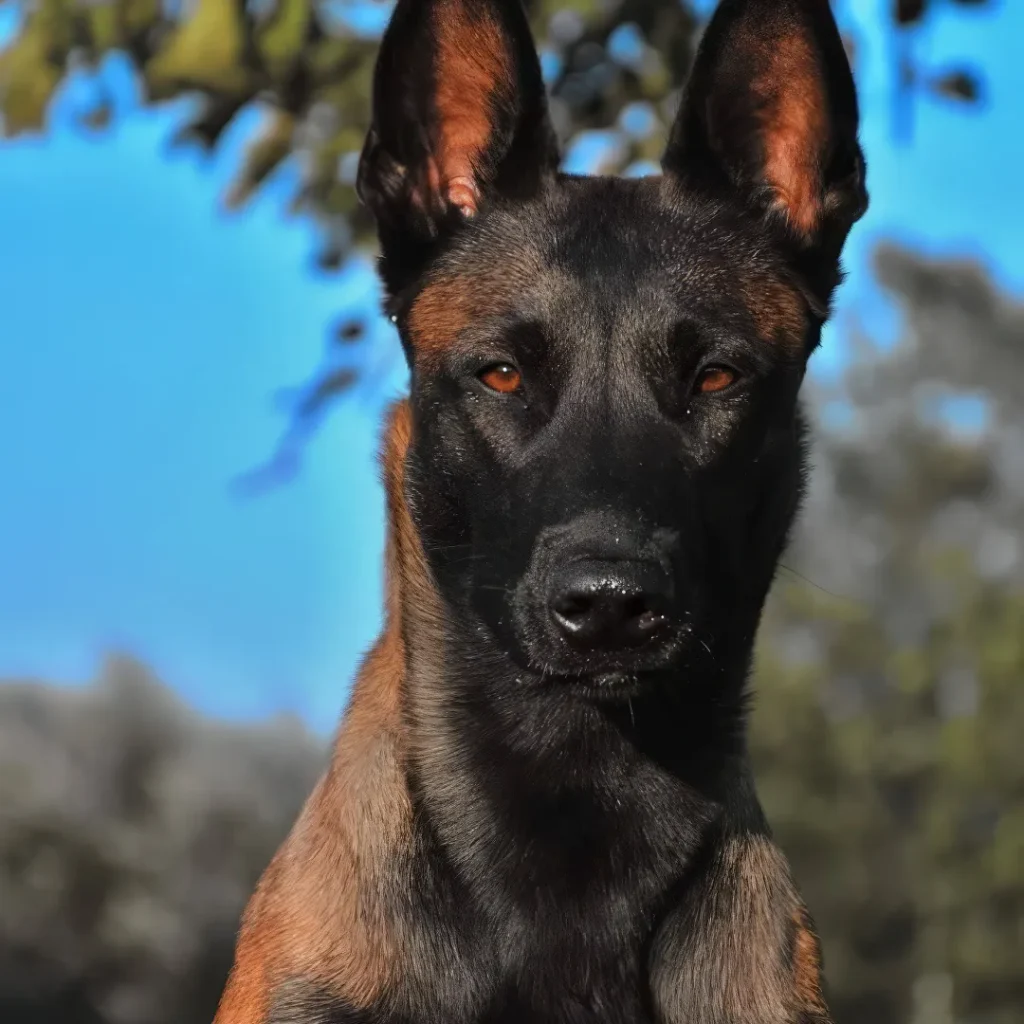
What is the average weight and height of a Belgian Malinois?
As a medium to large, athletic herding breed, Belgian Malinois are built lean and powerful. Males typically stand around 61-66 cm tall (about 24-26 inches) and weigh roughly 27-36 kg (60-79 pounds). Females are a touch smaller, usually 56-61 cm in height (22-24 inches) and about 18-27 kg (40-60 pounds). They often look lighter than you expect because they’re so trim and muscular my friend’s Malinois, Kira, is right in the middle of the range, yet she can still out sprint every dog at the park. https://en.wikipedia.org/wiki/Belgian_Shepherd
A quick tip if you’re measuring at home: stand your dog against a wall and use a book to mark the top of the shoulder (the withers), then measure to the floor. For weight, I step on a scale holding the dog and subtract my weight learned that trick after a very muddy hike when the vet’s scale wasn’t an option. You should be able to feel ribs under a thin layer of muscle and see a defined waist from above; that’s a better indicator of healthy condition than the number alone.
Expect some natural variation genetics, activity level, and age all play a part. Many Malinois hit their adult height by around a year and then “fill out” for several more months. Keep them in a healthy range with a balanced diet and plenty of exercise, and if you’re unsure where your dog should land within those ranges, a quick chat with your vet is always worthwhile.
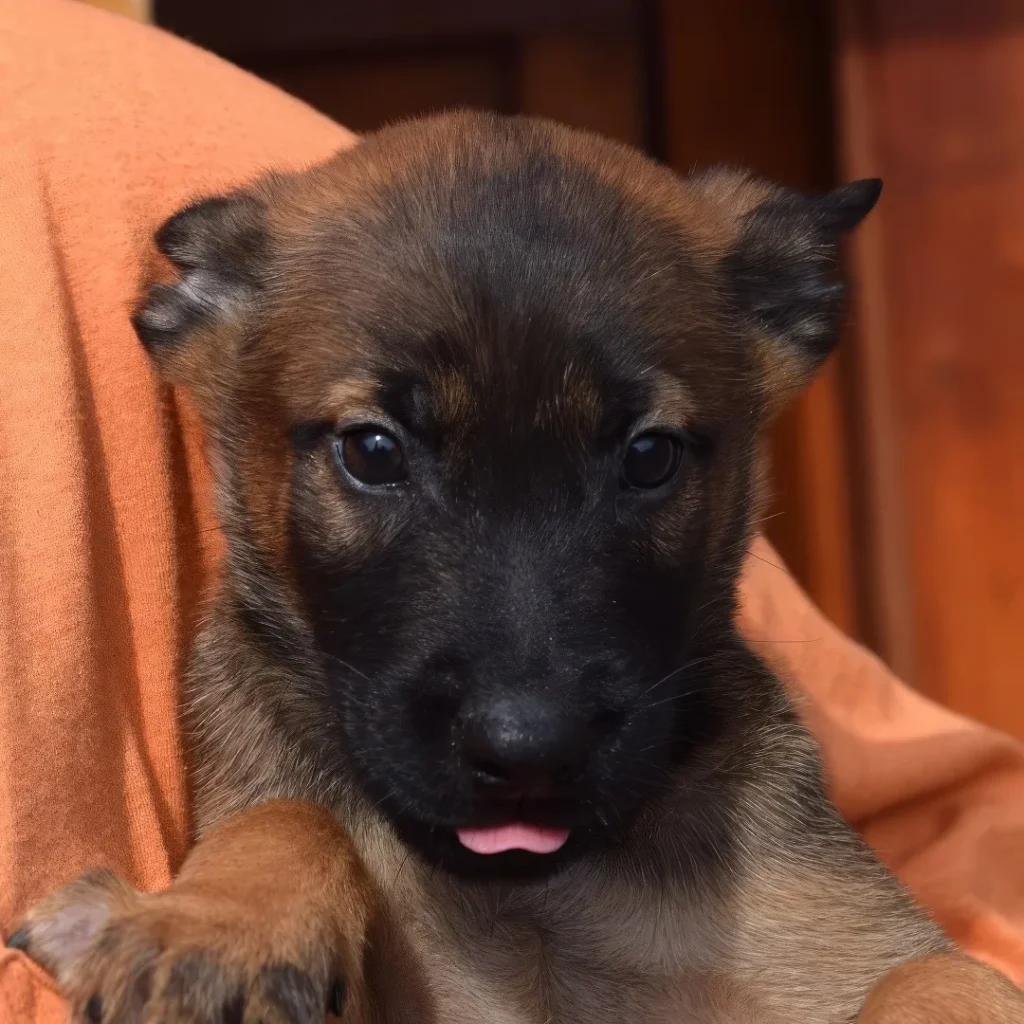
Are Belgian Malinois Easy to Train?
Think of them like the Belgian cousin of the German Shepherd: sharp, energetic, and eager to work, but they need the same focused attention from day one. Start early and stay consistent. These dogs are incredibly intelligent and pick up commands fast sometimes faster than you expect. I taught a Malinois pup “sit” in minutes; by the next day he’d also figured out how to open the pantry if I wasn’t watching. They learn the good and the sneaky with equal enthusiasm.
Consistency and experience make a huge difference, especially for curbing territorial or pushy behavior. Clear rules, lots of structure, and calm repetition help. I like to layer in impulse control basics wait at doors, settle on a mat, polite greetings right alongside the fun stuff like tug and fetch. A friend’s Malinois went from barking at the window to quietly holding a “place” while the mail arrived, simply because we made that calm behavior rewarding every single time. Redirecting their natural drive into jobs tug with rules, scent games, obedience drills keeps that sharp brain happy and out of trouble.
With puppies, keep training and exercise gradual. Short, upbeat sessions beat marathon lessons, and protect growing joints by avoiding high impact leaps early on. Socialize them early and thoughtfully: new people, friendly dogs, bikes, strollers, even the clatter of shopping carts pair it all with treats and praise. I like “field trips” to watch the world from a calm distance, then move closer as confidence grows. Introduce them to family routines, alone time practice, gentle handling, and supervised kid time so they learn to get along with everyone they meet. Do that, and you’ll have a bright, biddable partner who loves to work and loves your family just as much.
How Do Belgian Malinois Behave? Temperament and Personality
If you bring a Belgian Malinois into your life, expect a companion who is both affectionate with their people and wired for purpose. Mine used to curl up at my feet after dinner like a shadow with a heartbeat sweet as can be then spring up the second I grabbed a leash or a tug toy. That’s the Malinois balance: loving at home, laser focused when there’s a job to do. Like their close Belgian relatives, they’re highly alert and naturally vigilant, which makes them excellent watchdogs for anyone who wants an extra set of eyes on the house, day and night.
Early socialization and training are non negotiable. This is not a shy breed, and that boldness can be wonderful when it’s channeled. A breeder I spoke with in California always says, “Start early, start happy,” and I couldn’t agree more. Breed clubs even the Belgian Sheepdog Club often recommend a puppy kindergarten class, and it’s worth every minute. Teach them how to greet politely, explore new places, and settle on a mat just as eagerly as they chase a ball. I like to mix short obedience sessions with brain games: scent work in the living room, a flirt pole in the yard, and puzzle feeders to take the edge off that busy mind.
With consistent guidance, Malinois blossom into confident, well rounded dogs who adore their families. They can be great with kids and other pets when you manage their herding instincts and channel that energy into appropriate outlets. My best advice? Give them a job any job. Structured fetch, agility basics, or even helping you “find” the TV remote turns their drive into teamwork. Do that, and you’ll have a loyal partner who’s as steady on the couch as they are on the move.
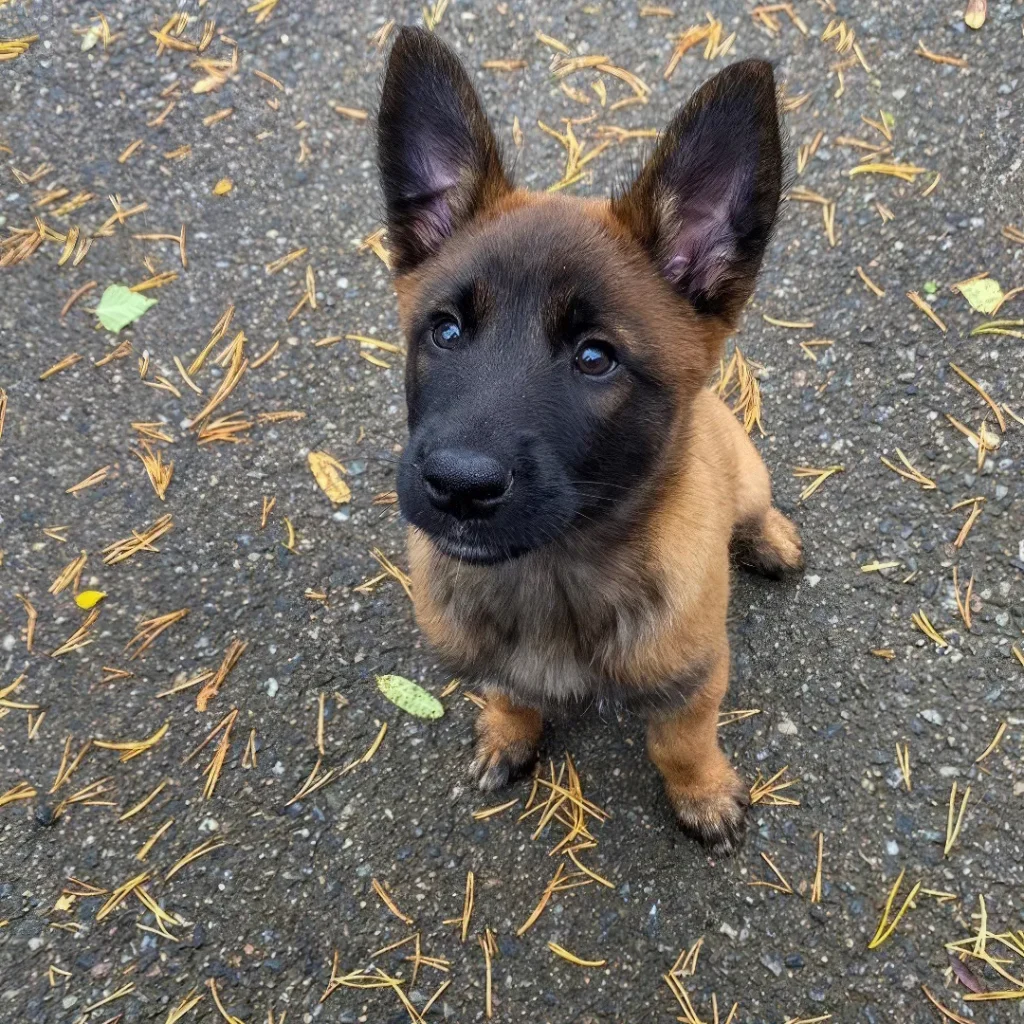
Do Belgian Malinois Have Common Health Issues?
Belgian Malinois are generally sturdy, athletic dogs, but like any breed, there are a few health concerns to keep on your radar. I always say their greatest strength their drive and energy also means you need to be proactive with care and checkups. A good breeder will screen for common issues, and a good owner will keep an eye out for early signs and keep the dog lean, fit, and well monitored.
Progressive Retinal Atrophy is one to know about. It’s a degenerative eye condition that slowly leads to blindness. There isn’t a cure, but don’t panic dogs handle vision loss much better than we do. They lean on their noses and ears like little superheroes. A friend’s Malinois, Koda, started losing night vision first; we noticed he hesitated on dimly lit stairs. Once his routine was consistent and the furniture stayed put, he moved around like he owned the place again. If your Mal is diagnosed, scent games, crinkly or squeaky toys, and textured floor runners can make life easier. I like scheduling annual eye exams with a veterinary ophthalmologist and asking breeders for eye clearances when selecting a puppy.
Hip and elbow dysplasia are also seen in the breed. With hips, the thighbone doesn’t fit quite right in the socket, which can lead to arthritis. Elbow dysplasia involves abnormal development and uneven pressure in the joint, causing pain or lameness. Early clues can be subtle: a “bunny hop” run, stiffness after a nap, or a sudden reluctance to jump into the car. I learned to swap concrete fetch sessions for grass and to keep my young dogs off repetitive high impact activities until they’re fully grown. Keeping your Malinois lean is huge extra weight is the enemy of happy joints. Talk to your vet about screening hips and elbows, using joint friendly exercises like swimming, and adding omega-3s or joint supplements if recommended. Warm ups before hard play and cool down walks afterward are small habits that make a big difference.
One more important note: some Malinois can be sensitive to anesthesia. That doesn’t mean they can never have procedures it just means your vet should tailor the plan. I once postponed a routine dental until the clinic could do full pre anesthetic bloodwork and had the right monitoring and safer drug options on hand. Don’t be shy about asking your vet what protocol they use, whether they’ll consider local blocks when possible, and how they’ll monitor during and after anesthesia.
The bottom line: choose a breeder who screens for eyes, hips, and elbows, keep your dog fit and lean, and partner with a vet who understands the breed. With thoughtful care and a little planning, most Belgian Malinois stay healthy and ready for whatever adventure you dream up together.
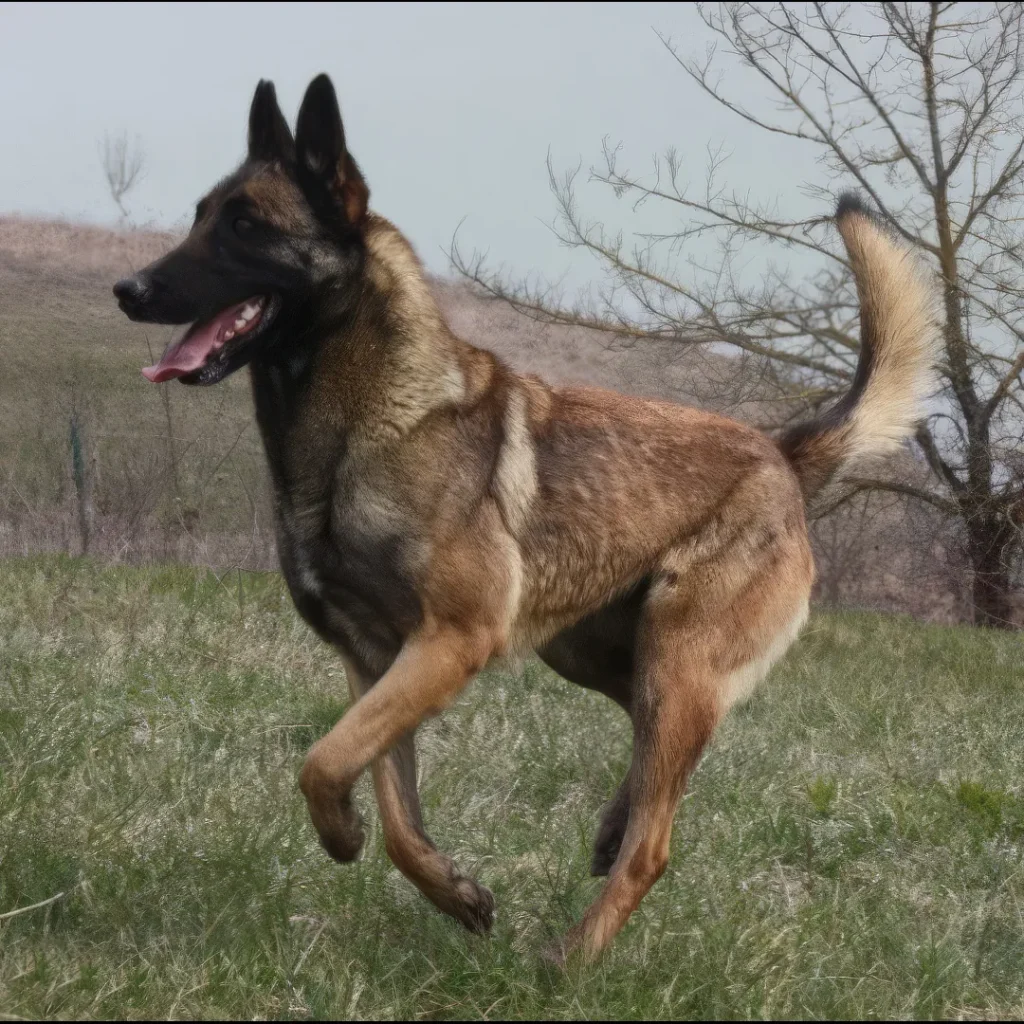
What Is the Lifespan of a Belgian Malinois?
Most Belgian Malinois live around 14-16 years, and with good care they tend to stay sharp and energetic well into their senior years. Mine kept me on my toes daily, and that constant exercise paid off you could still see the sparkle in his eyes at 13. A friend’s Malinois, Koda, was trotting along on easy hikes at 15, nose to the ground and tail doing that happy helicopter spin. Considering some dogs don’t make it to 10, getting well into the teens feels like such a gift.
If you want to help a Malinois reach the longer end of that range, think daily movement and mental work. They thrive on structure: brisk walks, fetch with rules, scent games, and short training sessions sprinkled throughout the day. Keep them lean, schedule regular vet checkups, and ask about joint support and dental care little things that add up over time. As they age, swap marathon sprints for gentler activities like swimming or several shorter walks, and add ramps or rugs for traction. I also learned to warm up with a few minutes of easy walking before play and to cool down after; it made a noticeable difference. Give a Malinois a job, love, and a steady routine, and you’ll likely enjoy many lively years together.
How Much Should You Feed a Belgian Malinois?
Belgian Malinois are busy, athletic dogs, so plan on 2 to 3 cups of dry food per day, split into four small meals. I like the four meal rhythm it keeps energy steady and helps prevent any frantic gulping. On big activity days, my Malinois, Freya, tends to do better toward the higher end of that range; on lazy, rainy days, we lean toward the lower end. Measuring with the same scoop each time (or even weighing the food) makes a surprisingly big difference in keeping things consistent.
You can make up that daily amount with dry food, wet food, or a raw diet follow whatever your vet recommends for your dog’s age, activity, and health. I’ve used a mix at times: mostly a high-quality kibble with a spoonful of wet as a topper to keep meals exciting. If you do switch types, transition slowly over about a week. The one time I rushed a change, I spent the next day doing extra yard patrol. Lesson learned.
Early on, try different food types and see what your dog thrives on. Watch for the little clues: good stools, a shiny coat, steady energy, no itchiness. I keep a simple note on my phone after each meal for the first couple of weeks with a new food nothing fancy, just “ate fast, no tummy rumbles, coat looks great.” It helps spot patterns.
A few small tips from my kitchen to yours: account for training treats in the daily total (they add up), use a slow feeder if your Malinois inhales dinner like a vacuum, and keep fresh water down at all times. And if you’re ever unsure, your vet can help you fine tune that 2 to 3 cup range so your dog stays lean, strong, and ready for the next adventure.
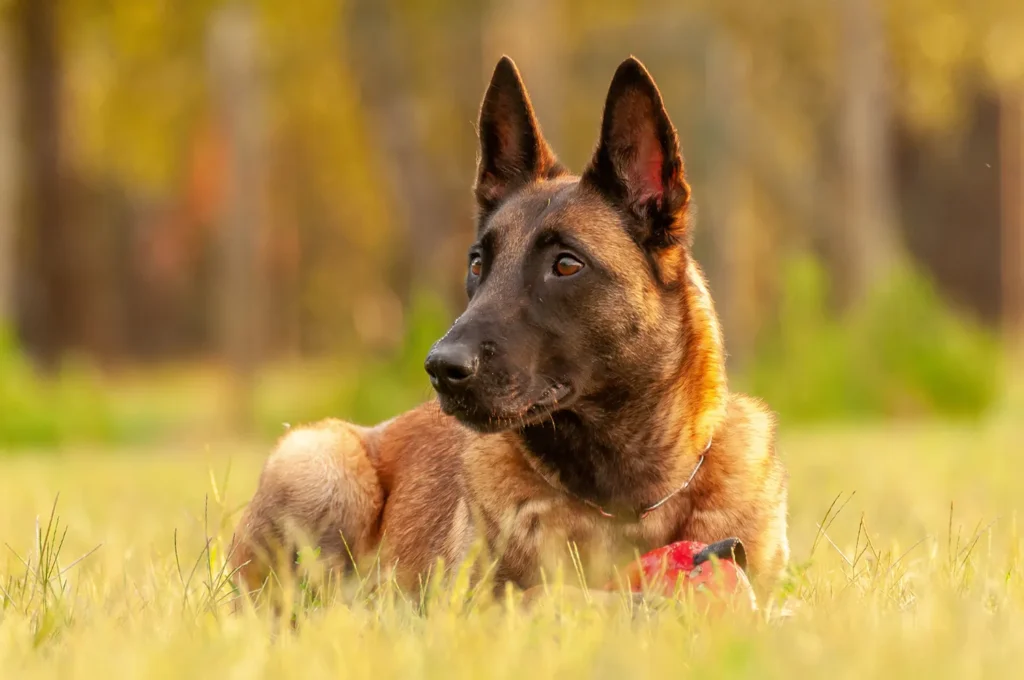
Belgian Malinois FAQs
Can a Belgian Malinois be a house dog?
Absolutely if you’re an active owner. These dogs are wired to work, but with enough exercise and structure, they can settle beautifully at home. My Malinois used to bounce off the walls in the morning, then snooze under my desk once we’d done a good training session and a long walk. They generally do well with families and tend to be sweet with kids when properly supervised and trained. That said, many Malinois do best as the only dog in the home. They don’t always mesh with other dogs or small pets, and their intensity can be a bit much. If you already have pets, take introductions slowly and thoughtfully neutral territory, leashes at first, and no pressure.
Can Belgian Malinois tolerate cold weather?
They prefer the cold over the heat. Their coat sheds seasonally and helps keep them comfortable in different temperatures. Mine will happily sprint through frosty fields, but I still watch for icy paws and windchill. In warmer months, they’re usually fine thanks to that shedding, but common sense rules apply: walk early or late, offer plenty of water and shade, and avoid intense midday workouts. Regular brushing during shedding season helps a ton with comfort (and keeps your vacuum from quitting the job).
Do Belgian Malinois like swimming?
Most do and they’re often all in. A friend’s Malinois will launch into a lake like a furry torpedo, then paddle laps as if he has a race to win. If your dog loves water, lean into it: it’s fantastic low impact exercise. Safety tips I swear by: a canine life vest for open water, rinsing their coat after swims to prevent itchiness, and drying those ears to avoid infections. Keep recall sharp around rivers and beaches Malinois enthusiasm can outrun their judgment when waves look exciting.
Are Belgian Malinois good watchdogs?
Yes. They’re alert, loyal, and naturally protective, which can make them excellent watchdogs. The key is channeling that instinct with training. Teach a solid “quiet” cue so they don’t bark at every leaf that flutters by, and socialize them well so they can tell the difference between normal visitors and something truly concerning. A confident, well trained Malinois is reassuring; an untrained, over guardy one is stressful for everyone.
How do you keep a Belgian Malinois entertained?
Think brain and body. Long walks are great, but you’ll also want mentally rich activities: obedience practice, scent games, puzzle feeders, hide and seek with toys, and short training bursts throughout the day. I like to rotate jobs fetch one day, a sniffy trail hike the next, then a backyard flirt pole session. Ten minutes of focused training can tire them out faster than an hour of aimless play. Don’t forget calm time skills, too: teaching a solid “settle” on a mat is a game changer for house life. And while they’re athletes, young Malinois need you to protect their joints build up activity gradually and mix in rest days.
Disclaimer:
This article is for informational purposes only and doesn’t replace professional veterinary or training advice. Always consult a certified vet or dog trainer for guidance specific to your pup.
